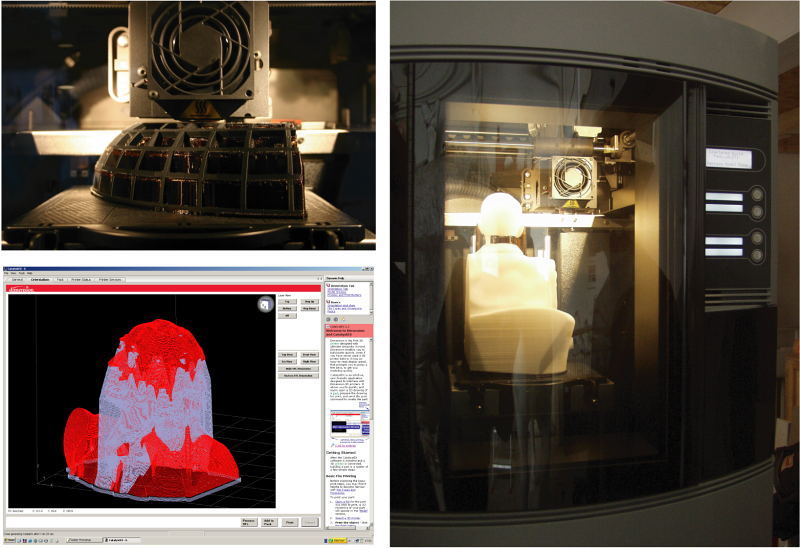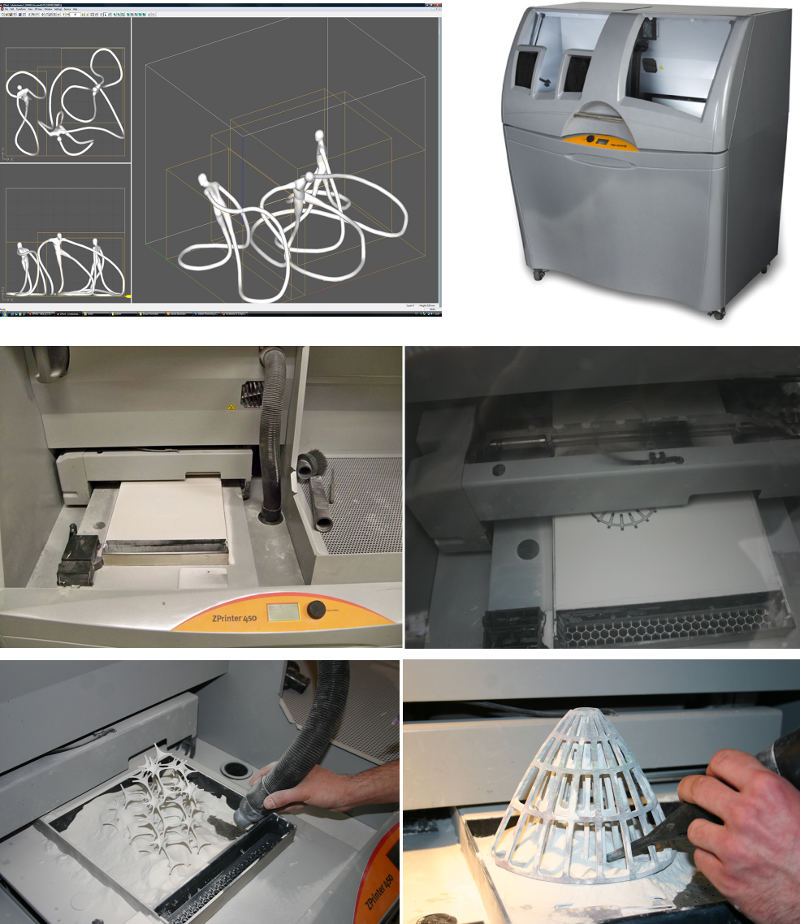The 3D printer Dimension works under the FDM method, the basis of which is melting and gradual applying of the material in very thin layers. The physical model is gradually created from the base and is formed vertically. Such a method enables the artist to create very complex structures. The printing of a 3D model can take even several hours and the length of the process depends of the complexity and size of the particular model. Non-toxic ABS material is used for the construction of the model. Models which would be otherwise absolutely non-realizable can be created only with 3D printers.

The 3D Zprinter 450 uses the same principle as the Dimension SST 768 printer, which consists in applying individual layers of the model topography, but uses a different technique. Unlike the Dimension printer, which applies layers by melting ABS (Akrylonitrilbutadienstyrene) rods, the Zprinter uses a plaster composite powder (82% plaster plus additives), which is applied to the entire surface of the printed object. The thickness of the layer can be selected (the range is from 0,087-0,125 milimetres). By filling the whole surface, the support system is not necessary (unlike in SST [Soluble Support Technologies]). This makes the Zprinter more attractive financially, as the powder can be reused for the production of new models. The model itself is made by applying an organic adhesive onto the surface corresponding to the section of the model in the given layer by the print head (HP11), as it is with common office printers. Thanks to thinner layers, the Zprinter is more detailed and can produce even subtle and detailed models. After the excess powder is cleaned off, the finished model is impregnated with (mostly) epoxy resin which ensures a high level of strength and enables further processing of the model (epoxy-infiltrated models can be easily sanded, varnished, polished, etc).
Despite all the advantages of the Zprinter, the Dimension SST 768 printer is more precise (although less detailed) and is more suitable for the manufacture of technical components and prototypes.
